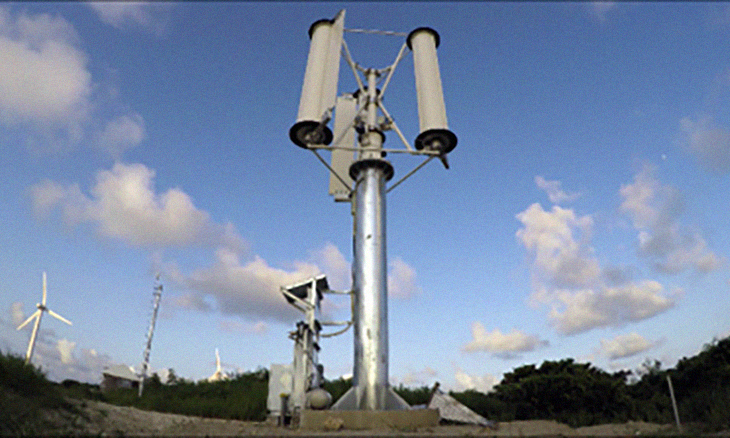
These days, it’s all about harnessing the power of nature to create energy. This eco-friendly solution will definitely help countries everywhere, especially areas that are often hot by typhoons. Establishing this may take time, but it has tons of potential.
When it comes to harnessing energy, man has learned to use the sun, water, and heat. Wind power has also been used, and this could really be sustainable because when it comes to weather disturbances, most areas are forced to cut off power for safety purposes.
People often say that the world is now “harnessing the power of nature” to create and generate electricity with the use of renewable resources. While this is all true, no technology has been made to harness the destructive forces of nature. Typhoons may be destructive, but they’re also extremely powerful. Hence, they may be something there.
Hence, a Japanese energy start-up company is doing just that as they delve deeper into the idea. They’ve now discussed building the very first ever wind turbine that’s strong enough to withstand tropical storms. Because typhoons and thunderstorms are powerful, they plan to capture that much force and energy in typhoon-plagued countries where the conventional wind turbines are forced to shut down while the weather is unstable.
Japan is forced to endure around an average of 26 typhoons and lower-level storms each year. Ironically, it’s because of this, the country’s wind energy capacity is still very low.
Atsushi Shimizu, founder of Challenergy, has managed to dramatically make changes on the look and function of the conventional mill-like wind turbine. His version now has the ability to generate power even amidst extreme weather conditions that happen often enough to the country.
The company came out with the “Magnus Wind Turbine” as it comes with large vertical blades that spin around a horizontal axis instead of vertical. The design is the exact opposite of the long, pointed blades spinning from a vertical axis that are installed in the usual wind turbines you see around.
“One of our goals is to turn typhoons into a strength,” shared Shimizu. He is the founder of the Challenergy in 2014. This happened after the Fukushima nuclear disaster as it served as inspiration to get dabble into the sustainable energy field.
He further stated, “If we can just partially leverage the vast energy brought by typhoons, we can consider typhoons not just as disasters, but as a source of energy.” This was what he told Reuters when he was given a chance to do an online demonstration of the turbines.
Challenergy’s first demonstration unit was built on the island of Batanes in the Philippines. This small country is comprised of a total of 7,600 islands. The people are often hit by serious problems of maintaining rural power grids, especially when they are found directly in the typhoon path. In fact, they average a total of 16.8 typhoons on an annual basis.

Luckily, the Japanese company’s wind turbine was erected right before its first major challenge hit. The country was a casualty of a disturbance they named Typhoon Kiko, a Category 5 storm. It came with winds greater than 154 mph (249 km/h). In fact, this is the second-strongest typhoon since 1987 to hit the island. The strong winds came just shortly after the unit was constructed.
The wind turbine started had started its operations one day before the typhoon made landfall. In the midst of the storm, the turbine still operated normally until the early morning of September 11. The experts discovered that it had achieved the maximum power generation capacity, 11 kWh (net power), even under such harsh weather conditions.
At 6:00 AM local time, the wind turbine stopped its operations as expected because it had managed to reach its designed maximum allowable rotation speed. This was right before the eye of the typhoon had passed later in the morning. When the typhoon then regained its strength, it became quite challenging for them to keep track of wind speed data because of the poor connection it with the anemometer.
The demonstration happened and while unit experienced wind speeds that went beyond its designed maximum allowable speed, structural problems of the tower or support arms did not have problems at all. The cylinder and the rectifying plate of one of the two wings, unfortunately, had partially been damaged because of the flying debris that collided with it as the wind blew a variety of materials all over the area.
Still, the team behind Challenergy state they are taking advantage of this first real-world. This was their chance to test and implement countermeasures. This was also their chance to finding out what improvements need to be made. Once the structure is perfected, it may one day operate with stability and reliability during strong storms and typhoons.
What are your thoughts? Please comment below and share this news!
True Activist / Report a typo


